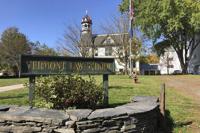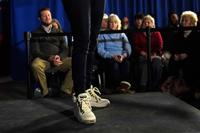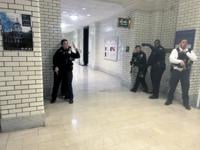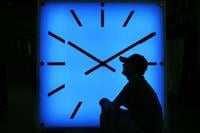An artist has lost his appeal to remove fabric panels concealing murals he painted to honor African Americans and abolitionists involved in the Underground Railroad but that officials at the Vermont law school where they're housed found to be racially insensitive.
Artist Sam Kerson created the colorful murals entitled “Vermont, The Underground Railroad” and “Vermont and the Fugitive Slave” in 1993 on two walls inside a building at the private Vermont Law School, now called Vermont Law and Graduate School, in South Royalton.
In 2020, the school said it would paint over them. But when Kerson objected, it said it would cover them with acoustic tiles. The school gave Kerson the option of removing the murals, but he said he could not without damaging them.
When Kerson, who lives in Quebec, sued in federal court in Vermont, the school said in a court filing that “the depictions of African Americans strikes some viewers as caricatured and offensive, and the mural has become a source of discord and distraction.”
Kerson lost his lawsuit in U.S. District Court in Vermont and appealed. The 2nd U.S. Circuit Court of Appeals in New York, which , agreed with the lower court in its ruling last Friday.
Kerson didn't immediately respond on Thursday to an email seeking comment.
“This case presents weighty concerns that pin an artist’s moral right to maintain the integrity of an artwork against a private entity’s control over the art in its possession,” the circuit court panel wrote.
Kerson argued that the artwork is protected by the federal Visual Artists Rights Act, which was enacted “to protect artists against modifications and destruction that are prejudicial to their honor or reputation,” his lawyer, Steven Hyman had said.
He said the covering of the artwork for the purpose of preventing people from viewing it is a modification and that Kerson “must suffer the indignity and humiliation of having a panel put over his art.”
But the school’s lawyer, Justin Barnard, argued that covering the artwork with a wood frame that doesn’t touch the painting and is fixed to the wall is not a modification.
The circuit court, in agreeing with the lower court judge, added that noting in its decision “precludes the parties from identifying a way to extricate the murals” so as to preserve them as objects of art “in a manner agreeable to all. ”








































